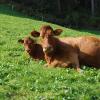Long time lurker and first time posting to get some feedback and thoughts about the story making the rounds now about significant amounts of organic and inorganic arsenic in rice, with brown rice and brown rice products being particularly high. This was noted even in some organic varieties.
Shockingly 365 Whole Foods Long Grain Brown was one of the worst offenders amongst numerous other recognizable "healthy" brands like Lundberg and Arrowhead Mills making the list with inorganic arsenic levels (per serving) exceeding the New Jersey drinking water limit (allowable per liter).
CR is calling for much more study, but found the levels to be high enough and pervasive enough that they are recommending that people limit their total rice consumption (including products made predominantly from rice like cereal, rice milk etc) to no more than 3 servings per week for adults and only 1 serving per week for children.
They specifically noted that those who regularly consume more rice than average had much higher levels of detectable arsenic in their urine. Those reporting consumption of one rice product in the prior 24 hours showed 44% more than those who had not. Those reporting eating two rice products had levels 70% higher than those who had no rice.
Would love to hear views and thoughts from those that have taken a serious look at the subject.
ABC News - Arsenic in Rice: New Report finds "Worrisome Levels":
http://abcnews.go.co...72#.UHK_wGjGVNE
LA Times - Rice Contains Worrisome Arsenic Levels, Says Consumer Reports:
http://www.latimes.c...,0,396689.story
Reuters - US Needs Arsenic Limits in Rice: Consumer Reports:
http://www.reuters.c...E88I0RR20120919
Arsenic in Brown Rice: Asians and Hispanic Affected More Than Average American
http://www.foodworld...ge-american.htm

















































